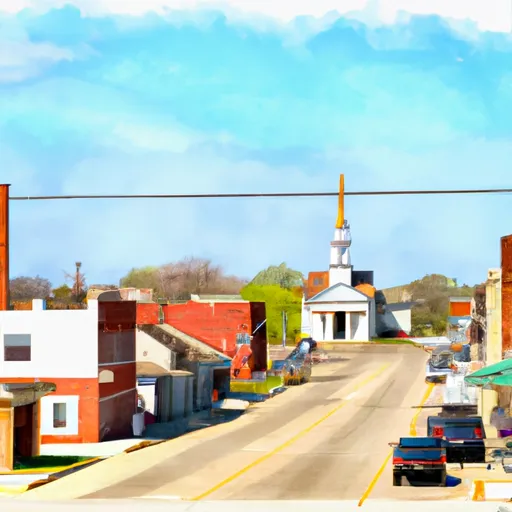-
 Snoflo Premium
Snoflo Premium
Get unlimited access to all our content
With no Ad interruptions! - Start Your Free Trial Login with existing account
Williamsburg
Eden Index
Climate
7.9
•
Recreation
2.2
•
Community
•
Safeguard
3.9/10

Williamsburg, Indiana is a charming town located in the eastern part of the state. It experiences a humid continental climate with four distinct seasons. Summers are warm and humid, with average temperatures in the mid-80s (°F), while winters are cold with temperatures dipping below freezing. Spring and fall bring mild temperatures, making them the ideal seasons to explore outdoor activities in the region.
Williamsburg is situated in the Whitewater River watershed, contributing to its hydrology constituents. The area is known for its abundance of rivers, lakes, and streams, making it a haven for water enthusiasts. Fishing, boating, and kayaking are popular activities, with the Whitewater River offering great opportunities for recreational activities.
Nature lovers will also find several outdoor recreation opportunities in Williamsburg and its surrounding areas. The town is surrounded by beautiful natural landscapes, including forests, parks, and trails. Outdoor enthusiasts can enjoy hiking, camping, bird watching, and picnicking in the nearby state parks and nature preserves.
Overall, Williamsburg, Indiana provides a diverse climate, abundant water resources, and various outdoor recreation opportunities, making it an appealing destination for nature lovers and outdoor enthusiasts.
What is the Eden Index?
The Snoflo Eden Index serves as a comprehensive rating system for regions, evaluating their desirability through a holistic assessment of climate health, outdoor recreation opportunities, and natural disaster risk, acknowledging the profound impact of these factors on livability and well-being.
Climate Health Indicator (CHI): 7.9
Williamsburg receives approximately
1050mm of rain per year,
with humidity levels near 83%
and air temperatures averaging around
11°C.
Williamsburg has a plant hardyness factor of
5, meaning
plants and agriculture in this region thrive during a short period during spring and early summer. Most
plants will die off during the colder winter months.
By considering the ideal temperature range, reliable water supplies, clean air, and stable seasonal rain or snowpacks, the Climate Health Indicator (CHI) underscores the significance of a healthy climate as the foundation for quality living.
A healthy climate is paramount for ensuring a high quality of life and livability in a region, fostering both physical well-being and environmental harmony. This can be characterized by ideal temperatures, reliable access to water supplies, clean air, and consistent seasonal rain or snowpacks.
Weather Forecast
Streamflow Conditions
Great Miami
Area Rivers
Great Miami
Snowpack Depths
Great Miami
Reservoir Storage Capacity
Great Miami
Groundwater Levels
Recreational Opportunity Index (ROI): 2.2
The Recreational Opportunity Index (ROI) recognizes the value of outdoor recreational options, such as parks, hiking trails, camping sites, and fishing spots, while acknowledging that climate plays a pivotal role in ensuring the comfort and consistency of these experiences.
Access to outdoor recreational opportunities, encompassing activities such as parks, hiking, camping, and fishing, is crucial for overall well-being, and the climate plays a pivotal role in enabling and enhancing these experiences, ensuring that individuals can engage in nature-based activities comfortably and consistently.
Camping Areas
| Campground | Campsites | Reservations | Toilets | Showers | Elevation |
|---|---|---|---|---|---|
| Franklin County Park | None | 662 ft | |||
| Ouabache State Park | 125 | 822 ft | |||
| Quakertown State Rec Area - Brookville Lake | 450 | 762 ft | |||
| Mounds State Rec Area - Brookville Lake | 450 | 945 ft | |||
| Brookville Lake | 465 | 694 ft | |||
| Paul Ogle Riverfront Park | None | 451 ft | |||
| Boat Ramp - Elmer Davis Lake - DFWR | None | 735 ft | |||
| General Butler State Park | 110 | 490 ft | |||
| Guist Creek Lake County Park | None | 792 ft | |||
| Governor Bebb Preserve | None | 729 ft |
Nearby Ski Areas
Catastrophe Safeguard Index (CSI):
The Catastrophe Safeguard Index (CSI) recognizes that natural disaster risk, encompassing floods, fires, hurricanes, and tornadoes, can drastically affect safety and the overall appeal of an area.
The level of natural disaster risk in a region significantly affects safety and the overall livability, with climate change amplifying these risks by potentially increasing the frequency and intensity of events like floods, fires, hurricanes, and tornadoes, thereby posing substantial challenges to community resilience and well-being.
Community Resilience Indicator (CRI):
The Community Resilience Indicator (CRI) recognizes that education, healthcare, and socioeconomics are crucial to the well-being of a region. The CRI acknowledges the profound impact of these elements on residents' overall quality of life. By evaluating educational resources, healthcare accessibility, and economic inclusivity, the index captures the essential aspects that contribute to a thriving community, fostering resident satisfaction, equity, and social cohesion.

